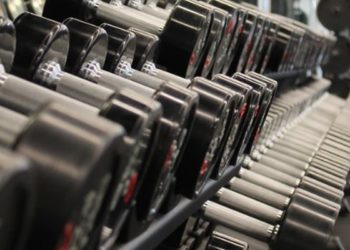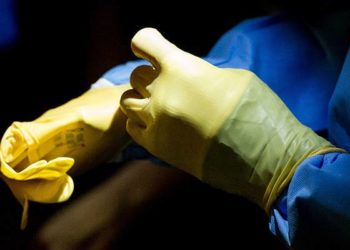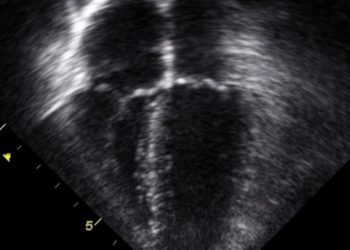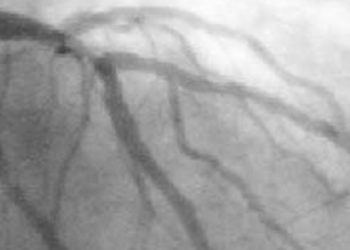2 Minute Medicine Rewind April 9, 2022
1. Online group-coaching significantly improved emotional exhaustion, self-compassion, and imposter syndrome scores among a group of female resident physicians at one American university
Evidence Rating Level: 1 (Excellent)
Female resident physicians are disproportionately affected by burnout, which can negatively impact their career trajectory and long-term personal well-being. Some evidence suggests professional coaching for reducing burnout in resident physicians is effective, yet individual coaching is resource intensive and consequently, often infeasible. There are few studies investigating effectiveness of group coaching for managing burnout among healthcare professionals. This randomized clinical trial assessed whether a structured professional group-coaching program for female resident physicians is successful at decreasing burnout. A total of 101 female resident physicians in graduate medical education at the University of Colorado were enrolled in this study. A computer-generated algorithm randomly assigned 50 participants to the intervention group, which offered a 6-month, web-based group-coaching program, Better Together Physician Coaching, developed by physicians and life coaches. The remaining 51 participants were randomly assigned to the control group, which received residency training as usual, with no coaching during the study period. The primary outcome of burnout was measured using the Maslach Burnout Inventory, which evaluates emotional exhaustion, depersonalization, and professional accomplishment. Secondary outcomes included imposter syndrome, self-compassion, and moral injury. The mean age of participants was 29.4 (2.3) years. Of 101 female residents included, 80.2% identified as White and 95.0% identified as heterosexual. Approximately one-fifth of participants were from surgical subspecialties. After 6 months of professional coaching, the intervention group experienced a decrease in emotional exhaustion by a mean of 3.26 (1.25) points. In contrast, the control group experienced a mean increase of 1.07 (1.12) points. Additionally, the intervention group experienced a significant decrease in presence of imposter syndrome compared with controls (mean [SE], −1.16 [0.31] vs 0.11 [0.27] points; P = .003). In the intervention group, self-compassion scores increased by a mean of 5.55 (0.89) points, whereas in the control group, they decreased by a mean of 1.32 (0.80) points. No statistically significant differences in depersonalization, professional accomplishment, or moral injury scores were found. It was concluded that an online multiformat group-coaching program may be an effective intervention to decrease burnout and improve well-being among female resident physicians.
1. A mailed at-home disposal kit increased self-reported opioid disposal rates among adults after common surgical procedures
Evidence Rating Level: 1 (Excellent)
Many prescription opioids post-surgery are left unused, increasing risk of misuse. Consequently, proper disposal of unused opioids is important. This two-arm, randomized clinical trial studied the effect of a mailed at-home disposal kit on disposal rates of unused opioids after surgery. Participants were assigned to either an intervention group, which was mailed an at-home disposal kit timed to arrive on postoperative day 4 to 7, or a control group, which consisted of a text message hyperlink to nearby disposal locations. Patients self-reported disposal via text messaging. A total of 302 patients 18 years or older underdoing an orthopedic or urologic procedure consented to participate in this study. Participants had a median age of 56.5 (IQR, 40.0-65.8) years. 136 (45.0%) were women and 240 (79.5%) were White. Participants were more likely than non-participants to be opioid-naïve (225 of 302 [74.5%] vs 225 of 355 [63.4%]). In the intervention group, self-reported disposal rates were 2.01 (95% CI, 1.2-3.4) times higher than in the control group. The results indicate that a mailed at-home disposal kit may be an effective and low-cost solution for increasing postoperative opioid disposal rates.
1. The use of acupuncture did not satisfactorily improve symptoms of dryness, pain, and fatigue in patients with primary Sjogren’s syndrome when compared with placebo treatment
Evidence Rating Level: 1 (Excellent)
Primary Sjogren’s syndrome (pSS) is a systemic autoimmune disease often characterized by a number of symptoms, including dry eyes, dry mouth, pain, and fatigue. It often has a significant impact on patients’ quality of life. Available treatments are only somewhat effective for symptom improvement. Acupuncture, a non-drug therapy, is often used to improve physical symptoms, such as dryness, pain, and fatigue, related to other conditions. It’s effectiveness for the treatment of pSS is unclear. Consequently, this randomized controlled trial aimed to evaluate the efficacy of acupuncture on the improvement of the main symptoms (dryness, pain, fatigue) of pSS. A total of 120 patients with pSS were randomized. Participants received acupuncture or sham acupuncture for 8 weeks and were subsequently followed for an additional 16 weeks. The primary outcome measure what the proportion of participants with a ≥30% reduction in ≥2 of 3 numeric analog scale scores for dryness, pain, and fatigue. It was found that, in the intervention group, 17/60 (28.33%) of participants met the primary endpoint, whereas in the control group, 19/60 (31.66%) of participants did. The homogeneity in ultrasonography of salivary glands at week 8 and IgG concentrations at week 16 showed significant differences between the two groups (P = 0.0334 and P = 0.0490). No other differences were observed. The authors concluded that, in patients with pSS, acupuncture did not satisfactorily improve symptoms compared with placebo. However, further studies may give rise to interesting discoveries in this area.
1. The total medical resource consumption in men ≥80 years of age with high-risk localized prostate cancer receiving radical prostatectomy was lower, in terms of the number of urology outpatient clinic visits, the number of hospitalizations for urinary-related disease and treatment-related complications, and medical reimbursement for urinary diseases or surgical complications, when compared with those receiving intensity-modulated radiation therapy
Evidence Rating Level: 2 (Good)
Localized prostate cancer (LPC) is still confined within prostate glands without extension to other sites. LPC is commonly asymptomatic. Consequently, younger men are more likely to receive curative-intent therapy, namely radical prostatectomy (RP) or radiotherapy (RT), than older men, who are more likely to receive conservative treatments, such as active surveillance. However, as average life spans are increasing, greater importance is being placed on curative cancer treatments in older populations (≥80 years). This cohort study compared the long-term medical resource consumption between RP and intensity-modulated radiation therapy (IMRT), a contemporary RT technique, among old (≥80 years) patients with LPC, particularly in those at high risk of prostate adenocarcinoma. Propensity score matching was conducted to investigate the medical expenditure of two therapeutic modalities (RP and IMRT) in elderly patients with high-risk LPC. Generalized linear mixed and logistic regression models were employed to evaluate the number of post-discharge visits and medical reimbursement for urinary diseases or complications and the number of hospitalizations for treatment-related complications over 5 years after treatment, respectively. The mean difference [95% confidence interval (CI)] of urology clinic visit numbers between RP and IMRT was 13.07 (10.45–15.49, P < 0.0001), 7.47 (8.01–14.92, P < 0.0001), 8.24 (4.59–9.90, P < 0.0001), 6.63 (3.55–11.70, P < 0.0001), and 5.02 (1.12–8.73, P < 0.0001) for the first, second, third, fourth, and fifth years, respectively. The mean difference (95% CI) of total medical claims amounts of RP and IMRT between the RP and IMRT + ADT groups was 2,69,823 New Taiwan Dollars (NTD) (247,676–291,970, P < 0.0001), 40,803 NTD (17,379–54,228, P < 0.0001), 36,202 NTD (24,375–68,029, P < 0.0001), 26,708 NTD (11,179–54,595, P = 0.0321), and 12,173 NTD (17,140–41,487, P = 0.0187) for the first, second, third, fourth, and fifth years, respectively. The authors concluded that long-term medical resource consumption was lower in old men with high risk LPC undergoing RP than in those undergoing IMRT.
Obesity, galectin-3, and incident heart failure: The ARIC study
1. Higher body mass index was associated with elevated galectin-3 levels
2. The combination of obesity and elevated galectin-3 levels was associated with significant heart failure risk
Evidence Rating Level: 2 (Good)
Obesity, often defined as a body mass index (BMI) ≥30 kg/m,2 is commonplace, affecting more than one-third of adults in the United States, and is associated with an increased risk of heart failure (HF). Studies have indicated that galectin-3 plays an active role in the development of myocardial remodeling, fibrosis, and heart failure onset and progression. However, its relationship with obesity is poorly understood. This cohort study explored the link between obesity and galectin-3 and the related implications for HF risk. A total of 8687 participants (mean age 63 years; 21% Black) at Atherosclerosis Risk in Communities (ARIC) Visit 4 (1996-1998) who were free of heart disease were evaluated. Logistic regression was used to estimate the association of BMI categories with elevated galectin-3 levels. Cox proportional hazards models was used to assess the combined associations of BMI and galectin-3 with incident HF. It was found that higher BMI was associated with higher odds of elevated galectin-3 (odds ratio [OR], 2.32; 95% CI, 1.88–2.86) for severe obesity ([BMI ≥35 kg/m2] versus normal weight [BMI 18.5‐<25 kg/m2]). Elevated galectin‐3 was similarly associated with incident HF among people with and without obesity (HR, 1.49; 95% CI, 1.18–1.88; and HR, 1.71; 95% CI, 1.38–2.11, respectively). People with severe obesity and elevated galectin‐3 had >4‐fold higher risk of HF (HR, 4.19; 95% CI, 2.98–5.88) than those with normal weight and galectin‐3 <25th percentile. The combination of severe obesity and elevated galectin-3 identifies a subgroup at particularly high risk of future HF who may benefit from early intervention measures.
Image: PD
©2022 2 Minute Medicine, Inc. All rights reserved. No works may be reproduced without expressed written consent from 2 Minute Medicine, Inc. Inquire about licensing here. No article should be construed as medical advice and is not intended as such by the authors or by 2 Minute Medicine, Inc.







